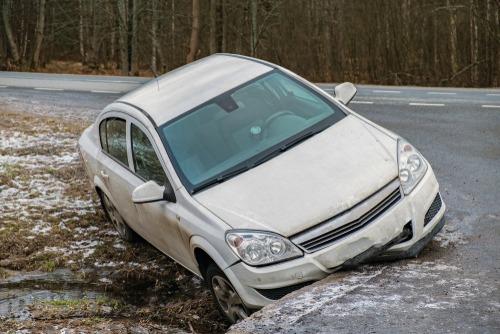
Who is Liable When Poor Road Conditions Cause a Car Accident?
Say you’re driving along and, all of a sudden, you hit a pothole and your car veers into the path of another vehicle? As a result, you are seriously injured in a terrible accident and aren’t quite sure where to turn. Poor road conditions like potholes, missing guardrails, erosion, or faulty design can cause not only serious damage to cars but also injuries to the driver who never expected it to happen. However, you may be wondering how you can go about suing or even whom you will sue.
If you have been injured in one of these terrible accidents, you may have to consider many things. For instance, you must be able to prove that the road conditions actually caused the damage to the car and the injuries. You also have to ask yourself, “Who was responsible for maintaining these roadways and how did they fail to do so?” You, as the plaintiff, will be expected to show that the agency or company taking care of the roadways didn’t adequately warn drivers of potential hazards that they hadn’t yet fixed. Yes, there are many things you must know before you bring about a lawsuit. Now you can find out more.
Who is Responsible and Did Negligence Occur?
Just who is responsible for road maintenance? Cities, counties, and states maintain roads. More than one governmental agency may be responsible for a certain roadway and its condition. For instance, you may find that a state is responsible for filling potholes while a city might be responsible for snowplowing and keeping ice off of roads. If you want to prove negligence, in many cases you will need to be able to determine who was responsible for the roadways so that you can bring about a lawsuit and determine if the lawsuit will get you the results you want or not.
If you can make a determination of who was responsible for the road, then you must also prove that negligence occurred in failure to properly maintain the road. This means that the agency could have repaired the road but chose not to do so, or built it in a dangerously faulty manner. For instance, a state might decide to cut back on funding for road repair; however, if a car ends up going off the roadway because of this and property damage and injuries occur, they may be held liable for that move.
How Can You Prove Your Claim?
- Request Survey Records: Regular surveys are conducted by the government to check for poor road conditions, and you are free to request these records. Examine the records carefully and make a determination of whether or not someone previously located the poor road condition that caused your vehicle damage.
- Show the Government Should Have Known About Poor Road Condition: This could be the most difficult step due to the fact that it may take some hard work. You will have to take measures to research the area and interview people that live nearby.
What is the Statute of Limitations?
You may know that such a thing exists known as a “statute of limitations,” where it is said that legal actions have a time limit within in which the plaintiff must sue and, if they miss the deadline, they cannot take legal action. Injury claims based on faulty road conditions in many states is anywhere from six months to two years. However, it must also be noted that many states will require a plaintiff to notify the responsible agency of the intention to sue before the case actually begins. This means that a plaintiff must identify the responsible agency of whom he or she is going to sue.
These injury cases can be very complex with laws and regulations standing in the way. Whether or not you decide to make a claim, you should always report the road condition so things are documented. If you decide to make a claim, it is in your best interest to have understanding legal help on your side. Call MDL today to find out what you can do about your case!



















